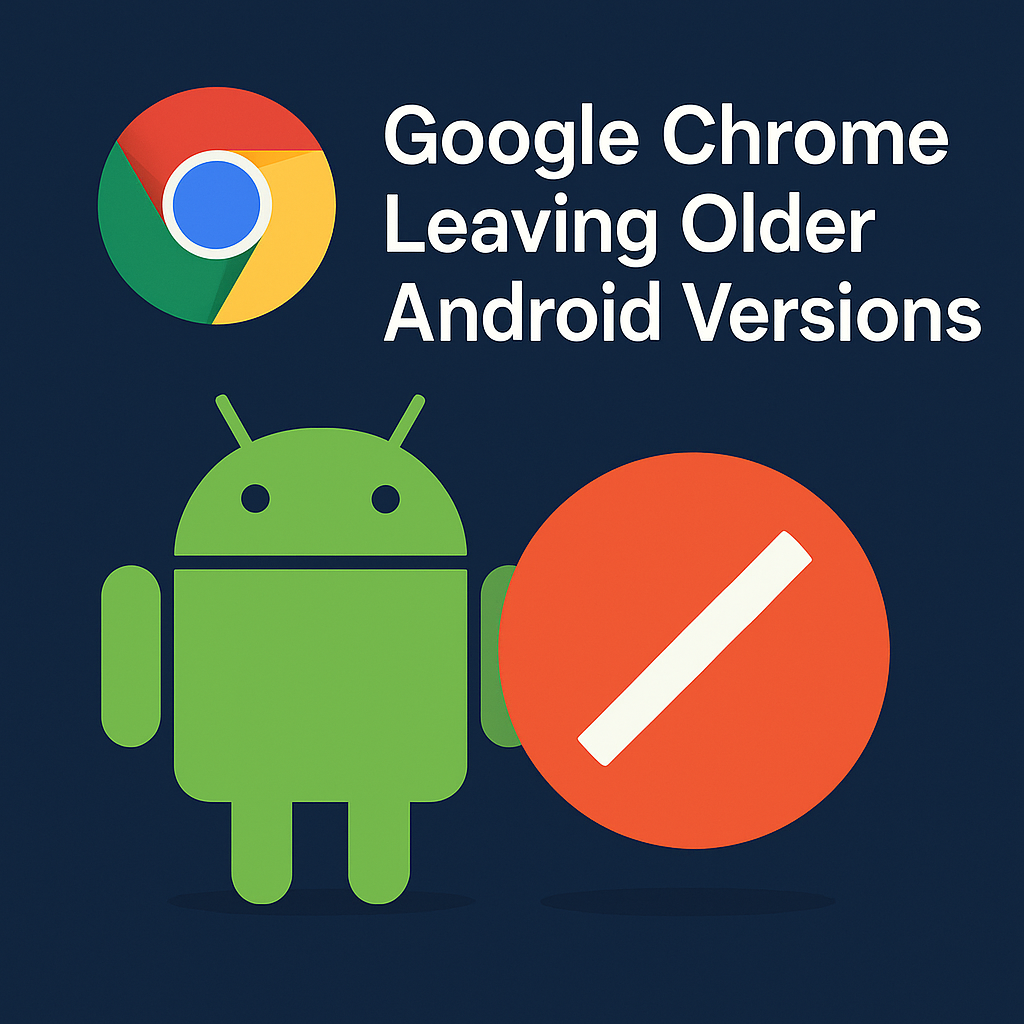Android
Google Chrome Ends Support for Older Android Versions: What It Means and Why It Matters

In the fast-paced world of technology, software updates and compatibility shifts are nothing new. However, when a tech giant like Google announces that its flagship browser, Google Chrome, will no longer support older Android versions, it marks a significant moment. This decision affects millions of users globally, especially in developing markets where older devices remain common.
In this article, we’ll explore why Google made this move, what versions are affected, the impact on users, and how to adapt if you’re using an outdated Android device.
Which Android Versions Are Being Dropped?
As of recent updates, Google Chrome has ended support for Android 7.0 (Nougat) and earlier. Chrome updates beyond version 120 will require Android 8.0 (Oreo) or newer.
This is part of a broader trend by Google and other app developers to phase out support for outdated platforms. Android 7.0 was released in 2016, and while it’s nearly a decade old, it still powers millions of devices, especially in parts of Africa, Asia, and Latin America.
Why Is Google Ending Support for Older Android Versions?
There are several strategic and technical reasons behind this move:
1. Security Concerns
Older versions of Android no longer receive critical security patches from Google. This makes them more vulnerable to malware, phishing, and data breaches. Continuing Chrome support on insecure operating systems puts users and Google’s reputation at risk.
2. Developer Efficiency
Maintaining compatibility with legacy platforms increases development costs and complicates codebases. By focusing on modern Android versions, developers can innovate faster and use newer APIs and technologies.
3. Performance Improvements
Chrome on newer Android versions benefits from optimized memory usage, better graphics acceleration, and improved speed. Supporting older systems would mean limiting these enhancements.
4. Low Adoption Rates
Google analyzes usage metrics before making such decisions. As fewer users remain on Android 7.0 and below, it becomes less economically viable to support those versions.
What Happens If You Keep Using Chrome on Android 7.0?
If you’re still using an Android device with version 7.0 or below, you won’t be able to update to newer versions of Chrome. Here’s what you can expect:
-
No New Features: You’ll miss out on modern features like improved tab grouping, password checkup tools, and AI-powered autofill.
-
Increased Security Risks: Without regular updates, vulnerabilities in the browser may go unpatched.
-
Compatibility Issues: Websites may stop functioning properly as newer web standards won’t be supported on your version of Chrome.
-
No Bug Fixes: Any issues that arise will remain unresolved.
While the browser might continue to work in its current state for some time, it will slowly degrade in functionality and security.
Who Is Most Affected?
The impact of this change is uneven across the globe. It primarily affects:
-
Users in low-income regions where old phones are still in widespread use.
-
Elderly users who don’t upgrade devices frequently.
-
Organizations using legacy systems in logistics, retail, or public services.
According to StatCounter, as of 2025, around 5–6% of Android users still rely on versions older than Android 8. That still translates to tens of millions of users worldwide.
What Are Your Options If You’re Affected?
If you’re using Android 7.0 or earlier and want to continue enjoying a secure browsing experience, here are your best options:
1. Upgrade Your Device
This is the most straightforward solution. Look for budget-friendly smartphones that run Android 11 or newer. Even entry-level phones now offer much better performance and longevity than older models.
2. Use an Alternative Browser (Temporarily)
Some third-party browsers like Opera Mini, UC Browser, or Kiwi Browser may continue supporting older Android versions for a while. However, they may not offer the same level of security, performance, or integration with Google services.
3. Switch to a Lightweight OS
Advanced users can consider flashing a custom ROM like LineageOS (if their device supports it), which allows older phones to run newer versions of Android. This is not recommended for casual users due to the risks involved.
4. Use Desktop Chrome or Other Devices
If your mobile browsing experience is compromised, consider shifting your main browsing to a tablet, PC, or another device that still supports Chrome updates.
What Does This Mean for the Future?
Google’s decision is part of a broader industry shift toward sunsetting legacy systems. As web technologies evolve, staying updated becomes essential—not just for access to new features but for safety and stability.
This move also sends a signal to hardware manufacturers and consumers: device longevity must include software longevity. Even if a phone’s hardware is functional, it becomes a liability when it can’t run up-to-date software.
Expect similar decisions from other major app developers in the coming years. Gmail, YouTube, and Google Maps may follow Chrome’s lead in requiring newer Android versions to ensure quality and security.
Final Thoughts
Google Chrome ending support for older Android versions is a significant but not surprising step. While it creates short-term inconvenience for some users, it also aligns with the broader goals of a safer, faster, and more sustainable web ecosystem.
If you’re affected by this change, the best course of action is to start planning for an upgrade. Internet security and functionality are too important to be left behind.
The digital world is evolving—and staying current isn’t just about convenience anymore; it’s about staying connected, safe, and empowered in an increasingly online world.












